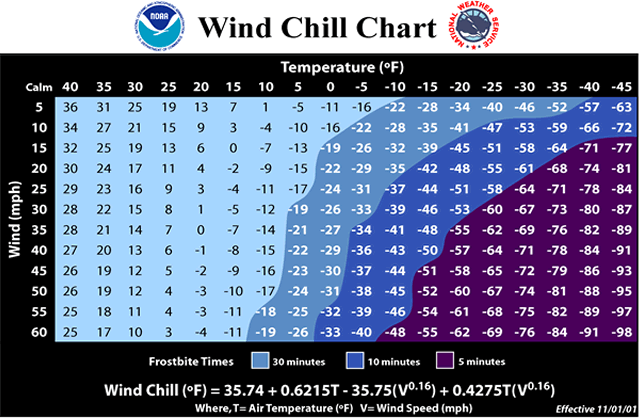Any time the temperature dips below freezing, there’s a risk for injury. However, it’s especially important to pay attention to the wind chill, as this puts you at greater risk for frostbite and/or hypothermia.
Frostbite can happen fast
You probably know the temperature–it’s cold–but did you factor in the wind? Depending on wind chills, it can feel much, much colder, and you can be at risk for developing frostbite sooner than you might expect.

Stay safe
The best way to stay safe is to stay warm and indoors and spend as little time outside as possible. When you must make the trek to class or work, take the bus instead of walking or biking and make sure you dress appropriately. Are you an outdoor runner? Try out the treadmill and put it on an incline to spice things up a bit—it’s only for a few days.
Is it ever TOO cold to go outside?
Wind chills of -45 degrees Fahrenheit mean that frostbite can occur within just 10 minutes on exposed skin. Is it too cold to be outside with any exposed skin? Yes. That’s why it’s important to dress appropriately for cold weather.
Dress the part
Leave no skin exposed! Before you step outside, dig out the following:

- a hat
- scarf or knit mask to cover face and mouth
- goggles or glasses to protect your eyes
- sleeves that are snug at the wrist
- mittens (they are warmer than gloves)
- water-resistant coat and boots
- several layers of loose-fitting clothing
Recognizing frostbite
At the first signs of redness or pain in any skin area, get out of the cold or protect any exposed skin. Signs indicating frostbite may include white or grayish-yellow skin area, skin that feels unusually firm or waxy, or numbness. People are often unaware of frostbite until someone else points it out because the frozen tissues are numb. If you notice signs of frostbite, seek medical care.